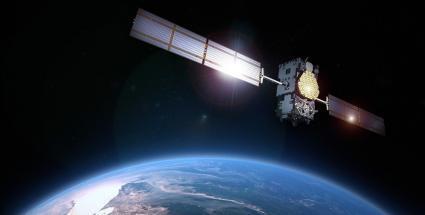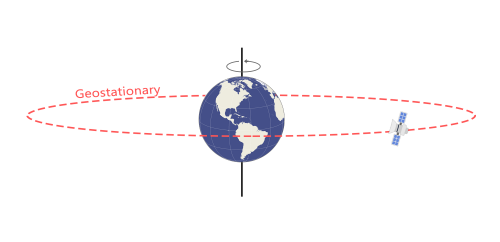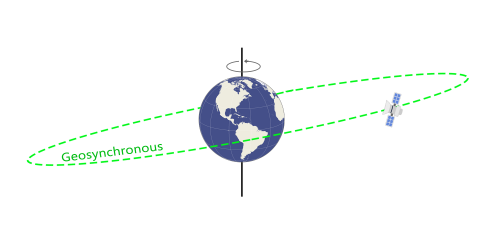
In general, there are two groups of satellites:
Some satellites orbit the equator and those that orbit from pole to pole.
For example, Landsat, Worldview, and Sentinel-2 satellites are in a polar orbit (or near-polar orbit)
But what are the benefits of orbiting at the poles?
Why do some satellites have a polar orbit?
Almost all the satellites that are in a polar orbit are at lower altitudes. This is because we use them for applications such as monitoring crops, forests, and even global security.
A polar orbit travels north-south over the poles and takes approximately an hour and a half for a full rotation. As the satellite is in orbit, the Earth is rotating beneath it. As a result, a satellite can observe the entire Earth’s surface (off-nadir) in a time span of 24 hours.

Higher altitude satellites orbit more slowly because the circumference of the circular orbit is larger. Also, the pull of gravity is weaker at higher altitudes.
When a satellite has a sun-synchronous orbit, it means that it has a constant sun illumination through inclination and altitude. For sun-synchronous orbits, it passes over any given point on Earth’s surface at the same local solar time.
Because of the consistent lighting in sun-synchronous orbits, scientists leverage this in various remote sensing applications.
How are polar orbits different from geostationary orbits?
Geostationary satellites are launched into orbit in the same direction the Earth is spinning. When the satellite is in orbit at a specific altitude, it will exactly match the rotation of the Earth. This sweet spot is approximately 36,000 km above the Earth’s surface in high Earth orbit.

Weather, communication, and global positioning satellites are often in a geostationary orbit. Because the satellite follows the Earth’s rotation always at the same point, an observer on Earth would be able to continuously “see” it.
In the case of geostationary satellites, the Earth’s force of gravity is exactly enough to provide the acceleration required for circular motion.

While geosynchronous satellites can have any inclination, the key difference from geostationary orbit is the fact that they lie on the same plane as the equator.
Geostationary orbits fall in the same category as geosynchronous orbits, but with that one special quality of being parked over the equator.
How do satellites orbit Earth?
While polar orbits have an inclination of about 90 degrees to the equator, geostationary orbits match the rotation of the Earth.
A sun-synchronous orbit passes by any given point with the same local solar time, which is useful for consistent lighting and sun angle.
Out of the three types of orbits (low, medium, and high Earth orbits), polar orbits often fall into low Earth orbits.
Learn more about geostationary and geosynchronous orbits.





